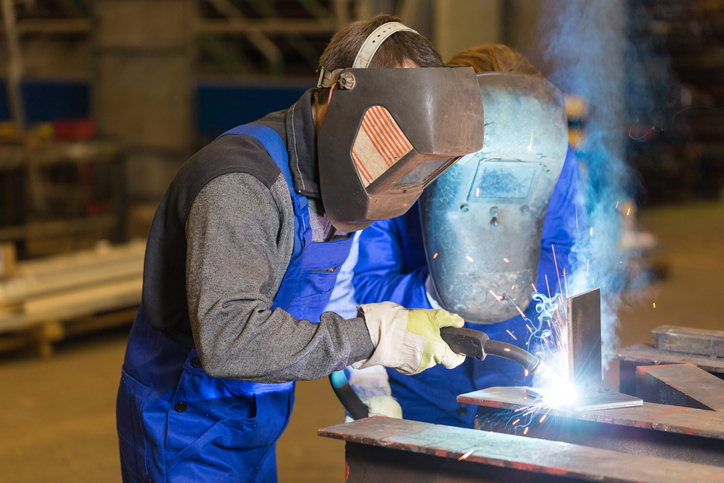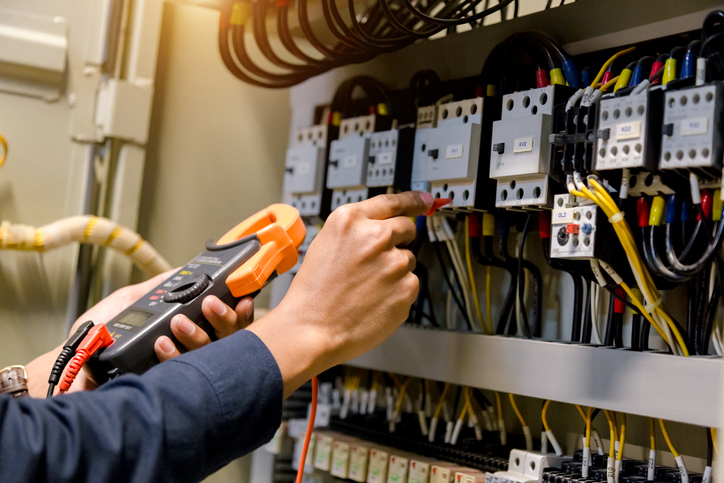Category: Uncategorized
Thinking about becoming a construction electrician in Brampton? It’s a solid career if you like working with your hands and being part of something you can see when it’s done—new homes, schools, shops, or warehouses powered by systems you helped build. Skilled trades like this are in steady demand in Brampton, especially with all the new housing and site development happening in the area. Whether you’re stepping out of high school or trying something new after years in another job, it makes sense to know what this work actually looks like and how to start training.
For people who enjoy solving problems on the spot and don’t mind physical work, the role can be a good fit. It’s active, there’s always variety in your day, and you get to work as part of a crew that’s building something real in your own community.
What a Construction Electrician Does Day-to-Day
Electricians are the key tradespeople called in when a building starts to take shape. On a typical workday, you might be:
– Running new wiring inside wood framing on a home or small office
– Installing breaker panels, light fixtures, or outlets for power tools
– Testing a system to make sure everything runs safely and matches local code
You’ll often work with blueprints to know exactly where components should go, especially when jobs involve larger commercial builds or custom homes. Those blueprints tie directly to the Ontario electrical code, so it’s important to follow every step. Electricians also show up for renovations or repairs—sometimes it’s a quick fix, sometimes it’s a full upgrade of an older system.
The job brings plenty of variety. Some days are spent indoors, some outdoors. You might be up on scaffolding one day, then in a basement trench the next. That daily change keeps the work interesting, but you’ll need to be ready and know your safety steps.
Skills You’ll Need—and How You Build Them
This work takes more than a steady hand and a strong back. You need to think ahead, stay sharp, and make safety a habit every single time you lift a tool.
Basic math comes up for measuring lengths or estimating loads. Focus helps when working with tight spaces or around other trades on a busy job site. Good electricians are problem solvers—they can spot an issue with a panel or figure out why a circuit will not run.
Training is key. In a program like the Construction & Maintenance Electrician pre-apprenticeship course at North American Trade Schools, you get to practise all these skills. From wiring circuits to using industry-standard tools and reading electrical schematics, each day is built around what you’ll face on a real job. Safety training is a big part too. Instructors bring real-world examples so you learn the importance of careful work from the start.
Training to Become a Licensed Construction Electrician
In Ontario, the path to becoming a construction electrician often starts with pre-apprenticeship or entry-level training. This lets you build up core knowledge and hands-on confidence before moving into a paid apprenticeship job. The program also prepares you to register as an apprentice and start earning the hours required for your Certificate of Qualification.
Success in this trade comes from putting in both classroom and job site hours. You’ll split your time learning electrical theory, safety practices, and code requirements in school. Then it’s on to work placements or apprenticeships, where you learn directly from experienced electricians on the job.
If you want to see how your journey could look, check out the Construction Maintenance Electrician program. It covers all the practical tools, safety codes, and job-ready projects that set you up for a local apprenticeship.
Job Opportunities and Work Conditions in Brampton
Brampton keeps skilled trades busy with a blend of new builds and upgraded older properties. The local market stays steady, with entry-level jobs always opening up for those with hands-on, relevant training.
You might be laying conduit on a winter site or wiring up a warm office space when the weather turns cool. The work goes on all year, indoors and outdoors. This means you need to be comfortable with changing conditions. Crews plan around the weather to keep on schedule.
After finishing training and starting your apprenticeship hours, you can step into roles with electrical contractors, construction crews, or start planning a path to being your own boss in the area. The career has room to grow, rewarding those who work hard with plenty of options.
Who This Trade Suits Best
Practical-minded people tend to thrive as construction electricians. If you’ve had hands-on jobs before, like roofing or landscaping, you already know how to handle the physical side and show up to job sites on time.
Recent grads who are interested in shop class or like fixing things around the house usually pick up new skills quickly. If you’re the one friends ask to help install a new ceiling light or fix a loose socket, this field is probably a good match.
New Canadians who want to start a skilled trade career may find this path especially welcoming. Electricians are needed in lots of settings, and once you have a foundation, there’s space to grow and put down roots in Brampton.
What Comes Next After Your Training
Once your core classes and lab hours are in the book, you’re ready to hunt for apprentice roles and start working on real projects. Expect to work closely with licensed professionals, learning new skills on the job while earning at the same time.
Getting your full licence in Ontario may take time, but each step comes with new experiences. The more hours you build, the more responsibility you take on. From helping install simple outlets to managing big commercial jobs, growth is a natural part of the trade.
Choosing a construction electrician career means steady hours, different job sites, and real pride when the power comes on for something you helped build. With focused training and an open job market, it’s never been a better time to land somewhere with skills that last.
Ready to put your skills to work in a growing trade? With steady demand, getting started as a construction electrician in Brampton could be the right move. Our hands-on training helps you build confidence with tools, site safety, and real job experience so you’re ready to take on work that matters. At North American Trade Schools, we’re here to help you move from the classroom to the job site with the support you need to succeed.
Whether you’re just starting to explore welding as a career or you’re looking to switch paths, understanding metal joining is a key part of learning the trade. It’s more than just making pieces of metal fuse. It’s about knowing which techniques to use, how each one applies in different work environments, and when to pick one over another. These decisions form the base for becoming skilled and confident in this field.
If you’re in London, Ontario, and considering welding as a profession, hands-on training will be a big part of how you learn and apply these methods in daily work. Welding isn’t something you can fully grasp through theory alone. Knowing about MIG and TIG is one part, but holding a torch, watching the weld pool take shape, and adjusting for metal thickness or type is where real learning happens. This is a big focus of the welding program at North American Trade Schools in London. Students gain that hands-on experience in real shop settings that reflect what they’ll see in the field.
Welding Techniques: MIG, TIG, and Stick
The three welding methods you’ll most often see in the field are MIG, TIG, and Stick welding. Each one fits different tasks depending on the material and setting. Learning the differences helps you become more versatile and job-ready.
1. MIG Welding (Metal Inert Gas)
– Easier to pick up for beginners
– Often used in auto repair and manufacturing
– Uses a continuously fed wire, making it good for large projects
– Best for thinner materials that need a clean finish
2. TIG Welding (Tungsten Inert Gas)
– Takes more time to learn but produces high-quality results
– Great for projects where looks and precision matter, such as bike frames or aircraft parts
– Ideal for thinner metals where accuracy is key
3. Stick Welding (Shielded Metal Arc Welding)
– Strong and dependable, even in outdoor or rough conditions
– Works well on dirty or rusted material
– Used in heavy equipment repair, large structural work, and pipelines
In the welding program at North American Trade Schools in London, students don’t just learn the theory behind these techniques. They get time on the machines, work with real materials, and simulate the kinds of job scenarios they’ll face in the field. Understanding how to adjust settings and match techniques to the project is a skill that sets graduates apart.
Brazing and Soldering: What’s the Difference?
While often discussed alongside welding, brazing and soldering work in different ways. They both use filler metals, but they don’t melt the base metal like welding does. That makes them useful when working with delicate or heat-sensitive pieces.
Brazing
– Uses filler metal that melts above 450°C
– Stronger than soldering and better for parts that will face higher heat
– Commonly used in HVAC units, hand tools, and even bicycle frames
Soldering
– The filler melts below 450°C
– Easier to reverse, making it good for small or temporary joints
– Used widely in electronics, roofing, and light plumbing
These methods are less about strength and more about precision. They are useful in areas where the weld needs to stay neat, the material can’t handle heat stress, or parts may need to be disassembled. In the welding technician program at North American Trade Schools, students train on each process and get used to handling the tools and materials needed for both brazing and soldering. This experience is valuable, especially in settings like HVAC and electronics.
Advanced Metal Joining Techniques to Expand Career Options
After learning the core techniques, stepping into more advanced processes can give you an extra edge. These methods are common in industries that focus on accuracy and performance, like renewable energy, aerospace, and precision manufacturing.
Laser Welding
– Uses a laser beam to make narrow, accurate welds
– Very fast and best for thin, detailed parts
– Popular in automotive and electronics manufacturing
Friction Stir Welding
– A solid-state process that doesn’t melt the metal
– Joins materials using pressure and rotation
– Often used with aluminium in aerospace, rail, and marine jobs
Both of these methods are showing up in more workplaces in Ontario. Shops and employers look for technicians who already know how these machines work. Welding students at North American Trade Schools are introduced to these technologies early, which helps them feel confident working with evolving equipment. Learning these newer methods can also open more job opportunities in growing and specialized industries.
Why Safety and Best Practices Matter So Much
You could be the most skilled welder in the shop, but without the right safety habits, the work becomes dangerous. Every weld has a role in the strength of a structure. Mistakes or shortcuts can lead to equipment failure, injury, or worse. That’s why safety isn’t something welders learn once. It’s built into every step of training and practice.
The welding program at North American Trade Schools trains students from day one to follow safety rules. They learn how to:
– Use protective gear, including helmets, gloves, and flame-resistant clothing
– Check tools and machines before and after each use
– Set up proper ventilation, especially in enclosed or small spaces
– Identify risks like gas leaks, metal fatigue, and fire hazards
– Avoid situations that could lead to arc flashes or burns
These good habits help speed up jobs, limit mistakes, and earn trust on job sites. Employers want workers who think of safety as second nature, not just something to tick off a list. That mindset is built through training that makes safety part of the daily routine.
Launch Your Welding Career with Confidence
Learning how to weld is about more than technique. It’s knowing which process works best where, how to keep yourself and your crew safe, and feeling confident working with modern technology. Whether it’s MIG, TIG, or Stick welding, or learning about brazing, soldering, or even laser welding, each method gives you tools to handle different jobs.
Starting your training at a welding school in London gives you the environment and support to build those skills. You’ll make real welds, follow actual safety rules, and learn from people who’ve done the job in the field. If you’re looking for something reliable, hands-on, and with steady job demand, welding is a solid choice. With the right training, you’ll be ready to step into any workshop and get the job done right.
Looking to become a skilled welder with hands-on experience? North American Trade Schools in London offers the comprehensive training you need. Our program equips you with the knowledge and skills essential for a rewarding career. Discover what our welding school in London has to offer and take the first step toward your future in the trades.
Choosing the right path to become an electrician takes more than interest in wires and power. It starts with getting the right training. For those thinking about a career in electrical work, the foundation you build early on matters. A solid training program can boost your confidence, skills, and job readiness. Picking the wrong one can leave you feeling unprepared and behind.
If you’re based around Brampton and trying to figure out what makes an electrician school worth your time and money, there are a few things to consider. From the structure of the classes to how much hands-on work you get, every part should help you apply what you learn. So before signing up, take a closer look at what sets a great electrician training program apart from the rest.
What To Look For In An Electrician Training Program
A strong training program will give you the building blocks to succeed both in the classroom and on the job site. It should help you understand how electricity works, introduce you to common materials and tools, and give you lots of practice in real-life tasks.
Look for programs that cover both theory and application. You might spend your mornings learning how to read wiring diagrams, then your afternoons wiring up a mock panel. That kind of flow makes it easier to see how ideas connect to tasks you’ll do in the field.
Here are a few key features that can make or break the value of a program:
– Balanced curriculum that mixes classroom learning with plenty of hands-on time
– Safety training that teaches you how to recognize and avoid hazards
– Practice with real tools like conduit benders, testers, and wire strippers
– Project-based learning that mirrors what you’ll face at job sites
– Clear paths for tracking progress with feedback along the way
When you get the chance to install wires into a wall, connect a panel, or check continuity with a tester during your training, it sticks with you far better than just reading about it. That hands-on exposure builds long-term confidence and helps reduce second-guessing once you’re on the job.
Instructors And Mentorship
One of the strongest signs of a good electrician school in Brampton is who’s teaching the course. Learning from someone who’s worked in the field brings insights that you won’t find in a textbook. Experienced instructors know the small details that matter, the methods that make tasks quicker, and the mistakes to avoid.
A strong instructor can adjust the lesson plan when something isn’t clicking. If a class struggles with something like three-way switches or service panel layouts, a skilled teacher can explain it in a new way. That kind of targeted support makes learning smoother.
Mentorship can be just as important. A great mentor doesn’t just mark your work. They talk with you about how the job feels out in the field, guide you when you’re stuck, and remind you it’s okay to make mistakes during training. The best mentors help shape your work habits and mindset.
Here are a few ways instructors and mentors can make a real difference:
– Giving feedback that actually explains what went wrong and how to improve
– Sharing real stories from job sites to bring lessons to life
– Encouraging students to keep trying and ask questions
– Offering extra support without hesitation when concepts are confusing
If you’re staring at a jumble of wires and feeling unsure, a calm, skilled instructor who helps you walk through the steps builds more than just skill. It builds the confidence to tackle the next challenge.
Facility And Equipment Quality
Learning electrical work in an outdated space with old tools won’t help you much on job sites in Brampton. If your training environment doesn’t reflect the places you’ll eventually work, there’s a big gap in your learning.
Modern, well-kept classrooms and labs give you the chance to develop skills in a space that mirrors the real work you’ll do. It’s about more than comfort. Clear layouts, updated tools, and safe setups help limit confusion and encourage better habits while learning.
Things to look for on a school visit include:
– Workstations that are spaced out and easy to work at
– Tools and equipment in good condition and ready for daily use
– Simulated setups that reflect what you’ll see in homes and businesses
– Readily available safety gear and shut-offs
– Clean, well-lit workspaces that reflect the type of job site you’ll join
Training with high-quality gear helps you avoid delays caused by faulty equipment. Plus, when your training environment feels like a job site, you’ll make a natural transition when stepping into real-world work.
Job Placement And Career Support
Once you finish your training, it’s time to find work. That’s when job placement services and ongoing support really matter. Schools with real connections to local employers in Brampton can help make that first step easier.
Whether it’s reviewing your résumé or preparing for interviews, strong support can ease some of the stress that comes with job hunting. Even better is when support doesn’t stop the day you graduate. Some schools offer help long after you finish the program through job boards, advice, or employer connections.
Signs that a school values career support include:
– Job fairs or networking events that connect students and employers
– Help with improving résumés and interview skills
– Staff who check in and offer tips during the post-grad job search
– Stories from past students who found jobs with guidance from staff
When a school helps you move from training into a steady job, it shows they’re committed to your full career journey.
How The Right Program Can Shape Your Career
Starting your journey as an electrician is about more than wiring a switch or reading a diagram. It’s about building daily habits, using quality tools, and learning to solve problems the right way.
The right electrician school in Brampton will give you room to grow, patient teachers, practice with modern gear, and support when you’re ready to find work. All the pieces—from the person standing next to you when you wire your first panel, to the tools you hold in your hands—shape how prepared you’ll feel stepping onto your first job site.
Brampton has strong opportunities for skilled tradespeople, and training at the right school can make all the difference. If you take the time to choose a program that offers great instruction, project work, proper tools, and strong career help, you’re already on the right path.
If you’re looking to get started in a rewarding skilled trade, training at an electrician school in Brampton can set you on the right path. At North American Trade Schools, our program is designed to help you build hands-on experience, gain practical knowledge, and feel ready for real job sites from day one.
RECO-developed Real Estate Salesperson Program now offered through Career College Group
July 03, 2025North American Trade Schools is excited to share that our parent organization, Career College Group (CCG), has launched the Real Estate Salesperson Program — now open for enrolment across Ontario.
If you’re thinking about switching gears or adding a new career path, this program offers a flexible, structured route to becoming a registered real estate agent in Ontario.

Developed by RECO. Built for Results.
This program follows the official curriculum developed by the Real Estate Council of Ontario (RECO), the province’s real estate regulator. You’ll complete the education required to qualify for registration as a real estate agent in Ontario.
What You’ll Learn
Designed by RECO, this program includes:
5 required real estate courses
2 simulation sessions
6 exams
You have 24 months to complete all components, but with CCGs program you can be done in under 40 weeks.
Why Choose Career College Group for real estate education?
CCG delivers more than just curriculum. What sets this real estate program apart:
Live weekly sessions with experienced facilitators
Online format with structured pacing
Peer accountability through a cohort model
It’s the same results-driven model used across CCG’s schools, including Medix College and NATS — designed to help more students finish what they start.
Becoming a Real Estate Agent in Ontario
There are three key steps:
Complete the Pre-Registration Program – CCG now enroling
Register with RECO and join a brokerage
Complete Post-Registration education within two years
Now Enroling
The July intake is currently open. Visit careercollegegroup.com to learn how to get started.
Considering Welding Training? A Day in the Life of an Apprentice Pipefitter
December 20, 2022
Pipefitters play very essential roles in the environmental context. They oversee the safe assembly, installation, and maintenance of a building’s pipe systems after studying the building’s blueprints. In addition, they also supervise the safe discarding of debris after every welding job, among other specialized duties.
To execute their duties optimally, pipefitters need to develop a unique set of skills. Some of these skills can be taught–trade schools in Canada offer programs that provide theoretical education. However, mastery of these skills can only be achieved through hands-on experience.
This is why a pipefitter apprenticeship is critical after completing your welding training. An apprenticeship typically lasts between three and five years. It offers a chance to learn the ropes of the trade under the watchful eyes of a veteran before you’re ready to stand on your own.
What do apprentice pipefitters do during this period? Here’s a peek at the daily routines of an apprentice pipefitter.
Apprentice Pipefitters Put Their Welding Training Into Practice
While a good welding program provides students with theoretical and practical learning, an apprenticeship enables them to truly dip their toes into the role, assisting and learning directly from veteran welders while putting the knowledge they learned into practice. The apprenticeship period allows budding welders to truly learn on the job.

Apprentice pipefitters honing their crafts under a veteran welder carry out their learning in the field. Apprenticeships are designed to give apprentices a good idea of what to expect from a career as a welder. To achieve this, greater emphasis is placed on practical education.
What this entails is that apprentice pipefitters are allowed to perform all the duties a veteran welder may be expected to perform, including:
- Testing pipe systems to ensure functionality and safety
- Assembling and securing tubes, pipes, and other fittings
- Installing, troubleshooting, and maintaining piping systems
- Testing installed systems and verifying compliance with industry standards
- Measuring, cutting, and threading pipes to specifications
- Using and maintaining industry-specific tools and equipment
Assist Veteran Welders
As part of their training, apprentice pipefitters assist master tradespeople with specific tasks on jobs. The apprentice may not be tasked with anything particularly dangerous or difficult at first; however, smaller tasks like fetching the welder’s tools, assembling and cutting pipes, and cleaning up the site after a job are part of the apprentice’s role.

With time, as the apprentice develops their skills and confidence, they will be trusted with more specialized duties.
Interact with Customers
As part of their welding technician training, apprentice pipefitters must develop soft skills. Hands-on training takes care of such skills as attention to detail and resilience, but good interpersonal and customer relations skills can only be honed through constant customer interaction. Thankfully, welding training takes care of these too.
On days when they go out on a job with their veteran welder trainers, apprentice pipefitters often serve as links between customers and the welder. They answer the customers’ questions and queries and relay their instructions to the welder.
Interested in training at a reputable welding college?
Contact NATS to learn more about our programs.
Careers in welding are a great move for people looking for exciting, fulfilling, and rewarding careers where they can use their hands and specialized skills. If you’ve always wanted to travel, have your pick of different specializations in your career, or if you like being judged based on skill, it might be the path for you. Welding classes can set you on the right track to building your skills and discovering what you want to do within the world of welding. Graduates move on to become apprentices to ironworkers, pipefitters, construction millwrights, boilermakers, or welders. The opportunities are vast and you can find the place where you fit best.
If you’re thinking about welding training, it can be helpful to see why your future career could be a rewarding choice for you personally. Read on to learn what the profession has to offer and how you could benefit from it.
Why a Career in Welding Could Be a Great Move for You
You Can Have Travel Opportunities
- Welding is a useful skill in many environments, including under water!
- Some people in the welding industry travel for a living
- It’s common for welding jobs to pay for travel
Apprentice Welders Can Support one Another
- Many online communities exist for welding
- Sharing and trading advice, information, or opportunities is common
- The large community can make finding jobs easier
You’ll Be Judged Based on Your Skill Level
- Many employers require a hands-on test
- After your training, you can secure a job with your skills
- Many positions will not involve judging you primarily on experience level
It’s a Profession that Is Valuable in Many Industries
Students of welding programs can become:
- Apprentice ironworkers
- Apprentice pipefitters
- Apprentice construction millwrights
- Apprentice boilermakers
- Apprentice welders
Apprentices Get to Learn From Others on the Job
- Paid positions in the field give you a chance to master the trade
- You can make connections and contacts in the industry
- Take your training to the next level by applying it to a real-life situation
It’s Also an Art Form
- Creative people might choose to expand their welding to include a hobby
- Metal sculptures can be made using welding skills
- This is a way to use training to satisfy both artistic and technical pursuits
Fun Fact: About half of all products manufactured in the world have welding as a part of their construction. These products include bridges and computers.

Cabinetmaking is an age-old skill within the woodworking tradition. Nowadays, skilled workers are applying cutting-edge tools and technology to push the trade into the modern landscape.
Graduates of cabinetmaking school open the doors to practical career opportunities in cabinet installation, store fixtures construction, and architectural millwork. In order to secure their footing in the field, graduates should know how to transform their knowledge and training into marketable skills. Employers want to feel confident that their workers have the experience and skillset to complete jobs to a high standard.
Here’s a closer look at how graduates can craft an impressive resume to land work in cabinetry!
Showcase Your Practical Experience
First and foremost, cabinetmaking is a hands-on trade. Skilled workers will need to know the fundamentals of shaping, cutting, and assembling different types of wood into a finished product. For that reason, employers are looking for someone who not only understands the theory of cabinetry, but who has practical experience working with the different materials and tools of the trade.
Cabinetmaking training combines classroom teaching with hands-on training in a lab. Students will work with industry-grade equipment–including a table saw, miter saw, drill press, joiner, edge banding machine, and power tools. When applying for a job in cabinetry, students should include examples of their practical experiences and specify how they have used different tools to complete their work. Employers may be scanning resumes for keywords, so it’s important to use industry terminology in your applications.

Highlight Employable Skills
Cabinetry is a dynamic profession for individuals with a range of theoretical and practical skills. Employers will be looking for workers with strength in design, construction, and organization. Students enrolled in cabinetmaking school will also learn the importance of soft skills. Time management and the ability to multi-task within tight deadlines are developed throughout the course. The ability to organize your work independently will demonstrate that you are a responsible and reliable worker.
As cabinetry entails physically demanding work, stamina and strength are valuable traits. Employers want to know that you are capable of performing various tasks in an efficient manner. Additionally, creativity and design skills are essential to crafting cabinets that are both functional and aesthetically pleasing. The key skills on your resume will not only showcase your personal strengths, but also demonstrate your understanding of what it takes to work in cabinetry.

Include an Official Degree From Cabinet Making School
Employers today are looking for candidates with an in-depth working knowledge of the trade. Training someone from scratch takes time and resources, and many companies are looking to hire someone with a pre-acquired skill set.
A degree from a trade school gives candidates a significant advantage in the job market. Students of a cabinetmaking program will learn the fundamentals of woodworking, blueprint reading, operating machines, surfacing techniques, and laminating procedures. They also gain practical experience using industry equipment. Upon graduating, students can immediately apply their training to a job in cabinetry. With a recognized degree from a trade school, employers can rest assured that their workers have the skills to jump straight into professional work.
Are you ready to enroll in cabinet making courses?
Contact NATS today!
Infographic: Things you Need to Know About Pursuing a Career in Home Renovation
April 07, 2021
Home renovation is an exciting choice for study and for a professional path. When you pursue home renovation as a career, you allow yourself to keep learning every day and develop skills that help people, while allowing you to see tangible results from your efforts. Home renovation school equips you with the skills you need to succeed, such as the basics of plumbing, carpentry, and stair construction.
There are some things that end up being very important after home renovation technician training that may surprise you. For example, communication is much more important than many realize, and you may spend quite a bit of your time speaking with homeowners. You also will need to be aware of tasks like record-keeping and managing dust, in addition to the various tasks you are responsible for.
If you’re curious about home renovation as a career and wondering what you need to know before chasing your dream, read on to learn more!
Things you Need to Know About Pursuing a Career in Home Renovation
It Involves a lot of Different Tasks
- Basic plumbing
- Carpentry
- Interior and exterior finishes
- Basic cabinetmaking
- Stair construction and installation
- Roof construction
These are all skills taught through hands-on training in a home renovation program. You may choose to specialize in your career!
Did you know? Kitchen renovations are a place many homeowners start to add value to their home.
You’ll Keep Learning
- No two homes are exactly alike
- You may work with others who have more experience
- You can solve problems and learn from challenges
Fun Fact: Basement suites are becoming more of a common renovation, as rising interest rates are creating a need for supplemental income.
Keeping Records Is Important
- Contracts are written records of agreements
- Records protect both you and the homeowner
- Keep a record of payment
- Keep copies of the emails or messages you exchange with homeowners
- Confirm information in writing using follow-up messages
You Will Make Mistakes Sometimes
- Things can go wrong on projects
- Owning up to the mistake right away is the professional response
- Communicate with the homeowner clearly
- Find a way to correct your work
- This approach makes you more trustworthy overall
Homeowners Are Curious
- Many people enjoy receiving tips and information on their homes
- Explaining your choices helps homeowners trust you
- Help people take better care of their homes
You’ll Find Dust Becomes an Issue
- The biggest cause of mess in home renovation is dust
- Dust spreads easily and gets in vents in homes
- You will benefit from techniques like covering vents
HVAC & The Environment: What You Should Know If You’re Pursuing an HVAC Career
March 10, 2021
Heating, ventilation and air conditioning (HVAC) systems have an essential function. They keep our homes cool in the summer and warm in the winter, in addition to regulating the quality and movement of the air that we’re breathing indoors. While HVAC systems aren’t the home appliances with the most severe environmental impact, there are still a few ways that HVAC systems can contribute negatively to the environment. HVAC systems may use refrigerants that can damage the ozone layer, and they also use electricity, the consumption of which burns fossil fuels and contributes to ozone depletion.
While HVAC systems can cause environmental harm, there are many solutions offered today which have the potential to reduce the impact HVAC systems can have on the environment. Some of these solutions can be implemented by HVAC technicians themselves. If you’re interested in becoming an HVAC technician, here’s what you need to know about the environmental impact of these systems and the solutions available today.
Those in an HVAC Career Should Know That HVAC Systems Can Emit Harmful Refrigerants
Air conditioning systems rely on cooling agents, or refrigerants, to drive cold air into homes, but these cooling agents have a known negative environmental impact. Hydro-chlorofluorocarbons (HCFCs), hydro-fluorocarbons (HFCs) and chlorofluorocarbons (CFCs) are all refrigerants that have been reported to contribute to ozone depletion and global warming, as these compounds are greenhouse gases. In Canada, Federal Halocarbon Regulations, 2003, bans the release of halocarbons from air conditioning systems in quantities over 0.1 kg of halocarbon per 01. kg of air, but these refrigerants are still being released into the atmosphere in lower quantities. Freon (R-22), a commonly used HCFC, has been banned in Canada for use in newly manufactured HVAC systems, and Puron (R-410A), a less-harmful HFC, is now more commonly used. However, this refrigerant still contributes to direct and indirect greenhouse gas emissions.

While it is difficult to control the emission of refrigerants into the atmosphere due to the range of HVAC systems in use today, advancements in technology have the potential to reduce their environmental impact. If you want to become a HVAC technician, you’ll probably become familiar with R-32 as a possible solution. R-32, or difluoromethane, is an HFC refrigerant known to have a lower impact on greenhouse gas emission than R-410A, and is being explored by HVAC engineers as an option to reduce the environmental impact of HVAC systems. It has been found that R-32 can even be used to make these systems more energy efficient, as it has better thermodynamic properties. In the future, developments in the use of alternative refrigerants such as R-32 have the potential to reduce the amount of greenhouse gases in the atmosphere as a result of HVAC systems.
HVAC Systems Use Energy
It’s important to be aware that HVAC systems consume high amounts of energy. Depending on the type of system and the season, an air conditioning system can consume around 3000 to 5000 watts of electricity every hour. Electricity consumption results in the burning of fossil fuels and the release of carbon dioxide into the atmosphere, a major cause of ozone layer depletion. One way to determine how much energy an air conditioning system is using is by checking its SEER rating. Older air conditioners have lower SEER ratings and tend to consume more energy.
As a way to reduce the amount of fossil fuels released, HVAC products that harness renewable energy sources are also becoming a more popular option. Renewable energy sources such as solar and geothermal energy can reduce the environmental impact of HVAC systems by using sources of power that don’t burn fossil fuels. Solar energy harnesses energy from sunlight rather than from fossil fuels to power HVAC systems, while geothermal heat pumps convert natural energy stored underground for use.

Small-Scale Solutions to Reduce the Environmental Impact of HVAC Systems
The environmental impact of HVAC systems can be reduced on a small scale, and as a professional in an HVAC career, this is an area where your services are especially useful to clients looking to reduce their own personal energy consumption and greenhouse gas emissions. The efficiency of an HVAC system depends on the equipment being used. If a system’s equipment is outdated, chances are it’s using more energy or emitting a greater quantity of harmful refrigerants. Advising environmentally-conscious clients to replace old HVAC systems with an updated, energy efficient system can reduce the negative impact of older units.
Additionally, HVAC systems should be regularly maintained in order to prevent excess emissions. Air filters should be replaced regularly, ducts and pipes should be inspected for leaks, and valves and steam traps should be examined for efficiency.
If you want to be equipped with the ability to make HVAC systems less harmful for the environment, a program at the North American Trade Schools (NATS) could be right for you. Jason, a graduate of the North American Trade Schools HVAC technician program, says he chose NATS because of its reputation as a “hands-on school.” He notes, “They teach you what you need to know and then you apply your knowledge.” Practical, experiential training enables HVAC technicians to apply their newly learned skills in the field in innovative ways. That includes approaches that may help to reduce the environmental impact of HVAC systems.
Are you interested in attending HVAC school?
The North American Trade Schools program could be right for you!
Electrical Power Systems in Buildings Explained for Those in Electrician School
August 25, 2020
Have you ever wondered how electricity flows into buildings? An electrical power system helps make this into a reality. With electrical power systems and their parts and conductors, they can vary based on how big or small the building is. The processes used to deliver electricity into those buildings can also differ based on the size and nature of the building. Electrical power is delivered and converted to any load in the building using the electricity. The power being distributed within the buildings can differ depending on both the size of the building using it and the system itself.
Understanding how electricity travels towards outlets in rooms in a building is important to know for your electrician career, as well as the necessary procedures for it to travel efficiently within the building, regardless of size. Here’s what an aspiring electrician should know about electrical power systems in buildings.
Important Facts for Electrician School Students to Know
For any electrical power system, electricity is delivered via conductors, which brings power between two different areas of the building. Usually in electrical cable form, conductors deliver electricity to a load device from a generator, and are often made of copper. It’s typically at extremely high voltages that power is transmitted from the plant to buildings, as this is what is most effective. However, smaller buildings have electricity delivered through a meter with lower voltage numbers via a transformer. A switchgear will then be used to not only be an on-off switch for the circuit (with current flow being either automatic or manual), but also to protect equipment from the power supply. Lastly, a load device such as a heating unit is used to turn electricity into energy types like light or heat.

Larger-Sized Buildings: Bigger Spaces Need Bigger Systems
A big building needs an equally big load of electricity. Electrical equipment must also be proportionately sized for the power it would carry, and a transformer would be used to lower the high voltages coming through it. A switchgear—or multiple ones, if the building needs more than one transformer—then delivers electricity to various parts of the building, via either a bus or feeder. Students in electrician school probably already figure this is the case, but large-scale buildings need more power, and electrical systems for these types of buildings are used to study factors like load flow to ensure the conductors and equipment are sized accordingly. With taller buildings such as high-rise apartment complexes, high-voltage lines can be brought into the building in order to place different transformers in rooms on different floors.
Smaller-Sized Buildings and Residences: A Simpler Process for Power
Those in electrician training may already know that smaller buildings and homes do not have a very complex system for distributing electricity. In these instances, either a utility pole or a pad will have the transformer attached to it–reducing the voltage before power goes to the meter. About 13,800 volts from the utility is significantly reduced, with power later going from the meter into the building. It then travels to a panel board with a series of breakers. Various circuit-based components in a home, such as lights or electrical outlets, will have this power flowing toward it. Residential homes often use low voltages of electricity, ranging between 110 and 260 volts. Smaller buildings such as low-rises tend to use step-down transformers, which reduce voltage to various levels depending on the size of the device using it.
Do you want to start your maintenance electrician training?
Contact North American Trade Schools to learn more!







